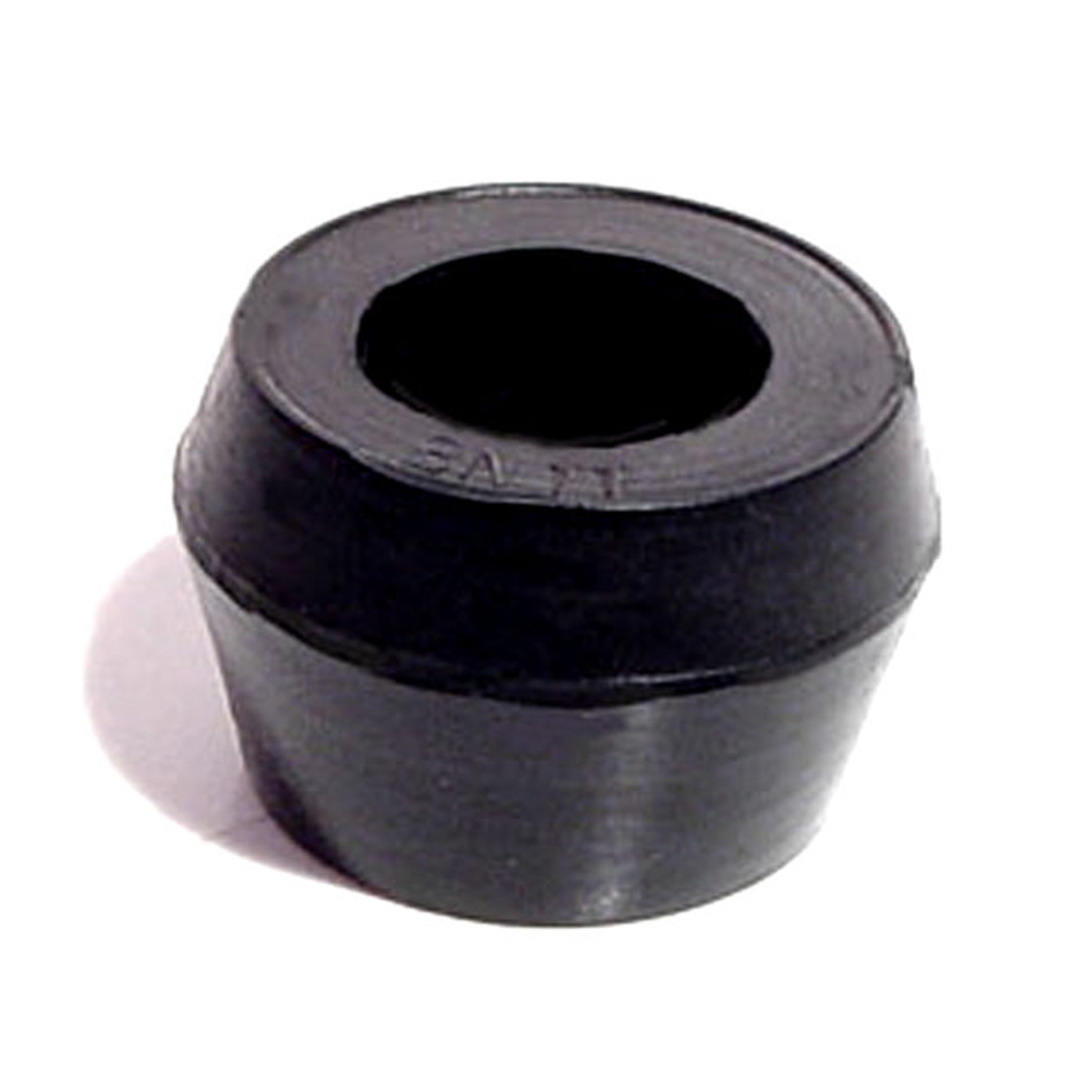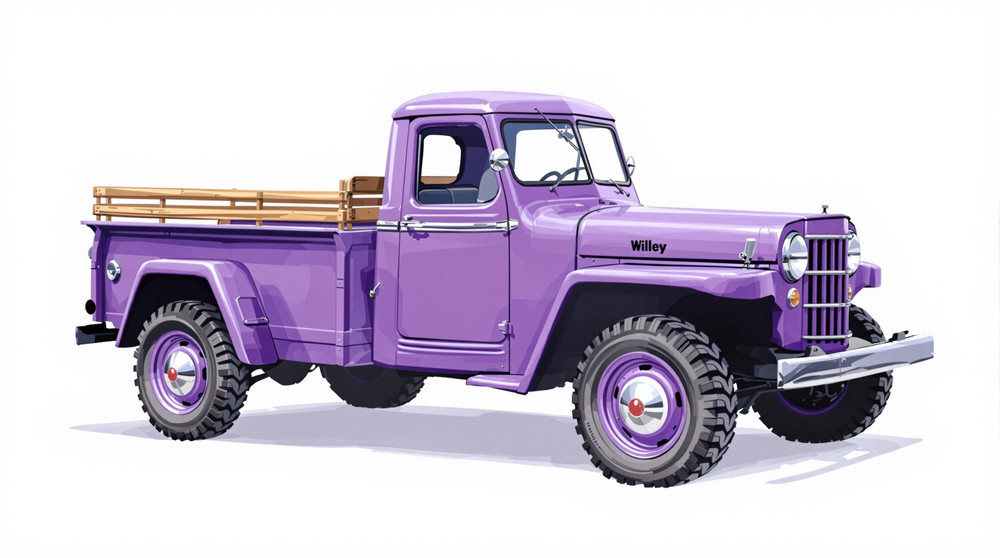Image of 1943 Jeep Willys, Note: These illustrations use artistic license and may differ from actual historical models.
Performance Metrics
Fundamental Metrics
Emotional Appeal
MMP Rating
| Engine Specifications | |
|---|---|
| Engine: | L134 Go Devil I4 |
| Displacement: | 134.2 cu in (2.2 L) |
| Horsepower: | 60 hp at 4000 rpm |
| Torque: | 105 lb-ft at 2000 rpm |
| Compression Ratio: | 6.48:1 |
| Ignition System: | Battery Ignition |
| Cooling System: | Liquid-cooled |
| Performance Specifications | |
| 0-60 Time: | Not available due to the vehicle's military usage and lack of standard performance testing during that era. |
| 1/4 Mile Time: | Not available for the same reasons as above. |
| Top Speed: | 65 mph |
| Transmission and Drive | |
| Drive Type: | 4WD |
| Transmission Type: | 3-speed manual |
| Fuel and Efficiency | |
| Fuel System Type: | Carter WO-596S one-barrel downdraft carburetor |
| MPG: | 15-20 mpg |
| Dimensions and Brakes | |
| Brakes: | Hydraulic drum brakes |
| Wheelbase: | 80 inches |
| Weight: | 2,293 lbs |
Note: Specifications for classic cars are given to the best of our ability, considering the limited and variant data available.
The Quintessential Warhorse: The 1943 Jeep Willys
Born from the urgency of wartime necessity, the 1943 Jeep Willys is a vehicle that encapsulates the resilience and ingenuity of an era. This rugged machine emerged as a product of the Willys-Overland Motors company, answering the call for a light reconnaissance vehicle to aid the Allies during World War II. Its creation marked a pivotal moment in military automotive design, setting a standard for durability and versatility that would influence generations of off-road vehicles.
A unique fact that often captures the imagination is that the Jeep Willys was the first vehicle of its kind to be mass-produced for military use, making it an integral part of the war effort on a global scale. Its notable moment came when General Eisenhower listed it as one of the four critical tools that won the war for the Allies, alongside the C-47 aircraft, the Higgins boat, and the atomic bomb.
Design and Innovation: The Blueprint for Modern Off-Roaders
The exterior of the 1943 Jeep Willys was a marvel of functional design, with its flat fenders, slatted grille, and compact body. It was built to withstand the harshest conditions, from the deserts of North Africa to the forests of Europe. Inside, simplicity reigned supreme; the interior featured minimalistic gauges and controls with an emphasis on accessibility and durability. The materials used were chosen for their ability to endure extreme environments and constant use.
Technologically, the Jeep Willys was ahead of its time, with a four-wheel-drive system that allowed it to traverse difficult terrain with relative ease. While color options were limited due to its military purpose, olive drab was the iconic shade that became synonymous with its image. The most popular body style was the open-top design with a fold-down windshield, which became emblematic of military Jeeps.
Historical Significance: A Legacy Cast in Steel
The 1943 Jeep Willys didn't just set itself apart from its contemporaries; it forged a new category of vehicle that combined utility with go-anywhere capability. Its impact on automotive design is seen in every modern SUV and crossover, echoing its philosophy of rugged simplicity. The Jeep's influence extends beyond the automotive industry; it became a symbol of American ingenuity and the indomitable spirit of the Allied forces during World War II.
Performance and Handling: More Than Just Muscle
Performance-wise, the Willys Jeep was not about top speed but about reliability and capability. It could reach speeds up to 60 mph, but its true prowess was evident in its acceleration and torque, which allowed it to tackle steep inclines and rugged landscapes. Handling was straightforward and robust, designed to keep soldiers safe over unpredictable terrain. Driving a Willys Jeep was an immersive experience; the roar of its engine and the feeling of conquering challenging landscapes created an unbreakable bond between machine and driver.
Ownership Experience: From Battlefield to Backroad
Originally serving as a military workhorse, the 1943 Jeep Willys transitioned into civilian life as a daily driver, show car, and even a racing vehicle in modified forms. Its maintenance is characterized by simplicity; many parts are interchangeable, and repairs can often be performed by owners with basic mechanical knowledge. Despite its age, the Willys Jeep remains a reliable companion for those who cherish its historical significance and utilitarian charm.
Fun Facts: The Jeep Willys' Enduring Legacy
Did you know that some Jeep models featured a power take-off (PTO) which allowed them to operate equipment like winches or farm machinery? This feature underscored its versatility beyond just transportation. While not known for setting speed records, the Jeep Willys holds a record in the hearts of enthusiasts for its service and longevity. Criticisms are few but often point to its spartan comforts – a small price to pay for such an iconic piece of history.
Collector's Information: A Treasure Beyond Price Tags
Today, estimating the value range for a 1943 Jeep Willys can be challenging due to its historical value and condition variability. Production numbers were in the hundreds of thousands, but many did not survive the war or subsequent years. A well-preserved or restored Willys can fetch anywhere from $15,000 to $30,000 or more, depending on its authenticity and historical significance. As a collector's item, its value has steadily appreciated over time as enthusiasts seek to own a tangible piece of history.
Conclusion: The Indomitable 1943 Jeep Willys
In summary, the 1943 Jeep Willys is not just another classic vehicle; it's a testament to human resilience and innovation during one of history's most challenging periods. Its design simplicity, battlefield utility, and post-war versatility have cemented its place as an icon among military and off-road vehicles. As we look back on its storied past, we are reminded that some machines do more than transport us – they carry our collective history.
1943 Jeep Willys Catalog of Parts
 1943 Jeep Willys Shock Absorber Grommet. 1" bottom O.D-BN 11Shock Absorber Grommet. 1" bottom O.D., 3/4" high, with 5/8" I.D. Each
1943 Jeep Willys Shock Absorber Grommet. 1" bottom O.D-BN 11Shock Absorber Grommet. 1" bottom O.D., 3/4" high, with 5/8" I.D. EachWhy Choose Metro?
For over 100 years, Metro Moulded Parts has been the pinnacle of quality in classic car restoration parts. Our commitment to precision and authenticity in every component ensures a perfect fit and an OEM-level appearance.
- Expert Craftsmanship & Quality: Each part is a testament to our dedication to reliability and perfection, crafted from original designs and thoroughly tested.
- Advanced Technology: We use cutting-edge techniques to create flawless, long-lasting parts that surpass others in performance.
- SuperSoft Sponge – The Ultimate Door Seal: Not only are our door seals 30% softer than competitors', but they're also guaranteed to never leak. They effectively reduce wind and road noise, enhancing your classic car's comfort and driving experience.
- Proudly American: Our parts are a product of American craftsmanship, made in the USA with a spirit of excellence and heritage.
- Unrivaled Warranty: We back our products with a 30-year industry-leading warranty, a testament to our confidence in their quality.
Join us in preserving the legacy of classic cars with parts that are crafted for perfection, not just made.

